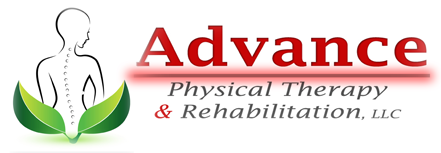
14 Aug Sciatica Exercises: 7 Stretches for Pain Relief
Sciatica is one of the hardest types of pain to treat. When even opioids don’t provide you with the relief you need to get through the day, it’s natural to throw up your hands in despair. However, simple physical therapy techniques, such as stretching, have been shown to be effective in reducing the symptoms of sciatica.
What Is Sciatica?
Sciatica occurs when your sciatic nerve becomes pinched, which branches off at the base of your spine. Therefore, a variety of spinal conditions and injuries can cause sciatica, and since the root cause of this kind of pain is a pinched or constricted nerve, painkillers are only minimally effective against sciatica.
Once your sciatic nerve reaches your hip, it branches and stretches down both legs. Therefore, hip injuries can also cause sciatica, and this type of sciatica is limited to one leg or the other. Wherever your sciatic nerve becomes pinched, pain, numbness, and redness can ensue, and increased mobility can often reduce the pressure on your sciatic nerve and improve the symptoms of this nerve condition.
Best Sciatica Stretches
When you visit a physical therapist for sciatica, you’ll be presented with a variety of tools that will help you recover. One of the most important aspects of your sciatica treatment is stretching, but you’ll need to know which stretches are best for sciatica before you get started. Here are the top 7 sciatica stretches you should try in conjunction with full-service physical therapy:
1. Sitting Pigeon Pose
The “pigeon poses” are some of the most important stretches you can incorporate into your routine if you have sciatica. Start your daily stretch regimen with the sitting pigeon pose:
- Sit on the floor, and stretch your legs in front of you
- Put your right ankle on top of your left knee by bending your right leg
- Lean forward, and reach for your toes
- Rest your torso on your thigh, and hold for around 30 seconds
- Release the pose, and repeat on the other side
2. Reclining Pigeon Pose
Doing the pigeon pose while laying down on a floor mat can open up your hips in ways that the Sitting Pigeon Pose can’t. Here’s how to do it:
- Lie on your back, and lift your right leg
- Clasp your fingers behind your thigh, and bend your knee
- Lift your left knee, and place your right ankle on your left knee
- Hold this position for around 5-10 seconds, then release
- Repeat the pose on the other side
3. Forward Pigeon Pose
If you’re feeling especially limber today, you might want to add the forward pigeon pose into your routine. Remember not to push yourself:
- Get on all fours, and put your right leg on the ground in front of your body
- Stretch your left leg all the way behind you
- Gradually shift your weight from your arms to your legs
- Repeat on the other side
4. Sitting Spinal Stretch
This motion is especially effective for spinal sciatica: Here’s how it’s done:
- Sit on the floor with your feet in front of you
- Lift your right leg, and put your right foot on the outside of your left knee
- Turn your spine to the right, then repeat on the other side
5. Knees to Chest
This stretch opens up your hips and benefits your spine simultaneously. Learn how to do it:
- Lay on the floor, and lift both of your legs up
- Put your hands behind your thighs, and allow your spine to flex upward as your hips open
- Hold for 30 seconds, then release
6. Knee to Opposite Shoulder
Similar to Knees to Chest, this stretch gives your hips a lateral stretch:
- Lay on the floor, and raise your right knee up toward your left shoulder
- Hold your knee in place for about 30 seconds, then release
- Repeat this pose for the other side
7. Standing Hamstring Stretch
It’s okay if you can’t reach your toes. Only follow these steps as far as you feel comfortable:
- Stand in front of a thigh-high object with your back straight
- Lift your right leg, and place it on top of the object in front of you with your toes pointed up
- Lean forward as far as you can go comfortably, and try to touch your toes
- Repeat on the other side
How to Overcome Sciatica
Overcoming the symptoms of sciatica can take years. Treating sciatica often involves treating the underlying condition that caused your sciatic nerve to become pinched, which may require surgery under extreme circumstances.
However, adhering to a strict physical therapy regimen has also been shown to reduce the symptoms of sciatica to the point of eliminating all traces of this condition. Remember that healthy bones and tissues leave no room for sciatica to occur, which means that improving your overall health, well-being, and mobility can treat sciatica just as well or even better than invasive surgeries or dangerous drugs.
Work with a Physical Therapist for Lasting Sciatica Relief
There’s no easy way out when you have sciatica. You’ll either need to pay dearly for drugs and surgery or put in the work necessary to stick with physical therapy to the end. Physical therapy mobilizes your body’s own healing resources to do the work that other treatments often fail to accomplish. Working with a physical therapist to improve the symptoms of sciatica doesn’t have any side effects; on the contrary, this time-honored form of treatment makes you healthier in every way.
Physical therapy isn’t a magical cure-all, but if you have sciatica and you aren’t incorporating physical therapy into your treatment process, you’re missing out on an incredible opportunity for healing. Trying the seven sciatica stretches we’ve listed is a great first step, but you should reach out to a physical therapist today to get started on the path to lasting recovery.




Sorry, the comment form is closed at this time.